Digital Designer
Interactive VR Excercise
for Space Travel
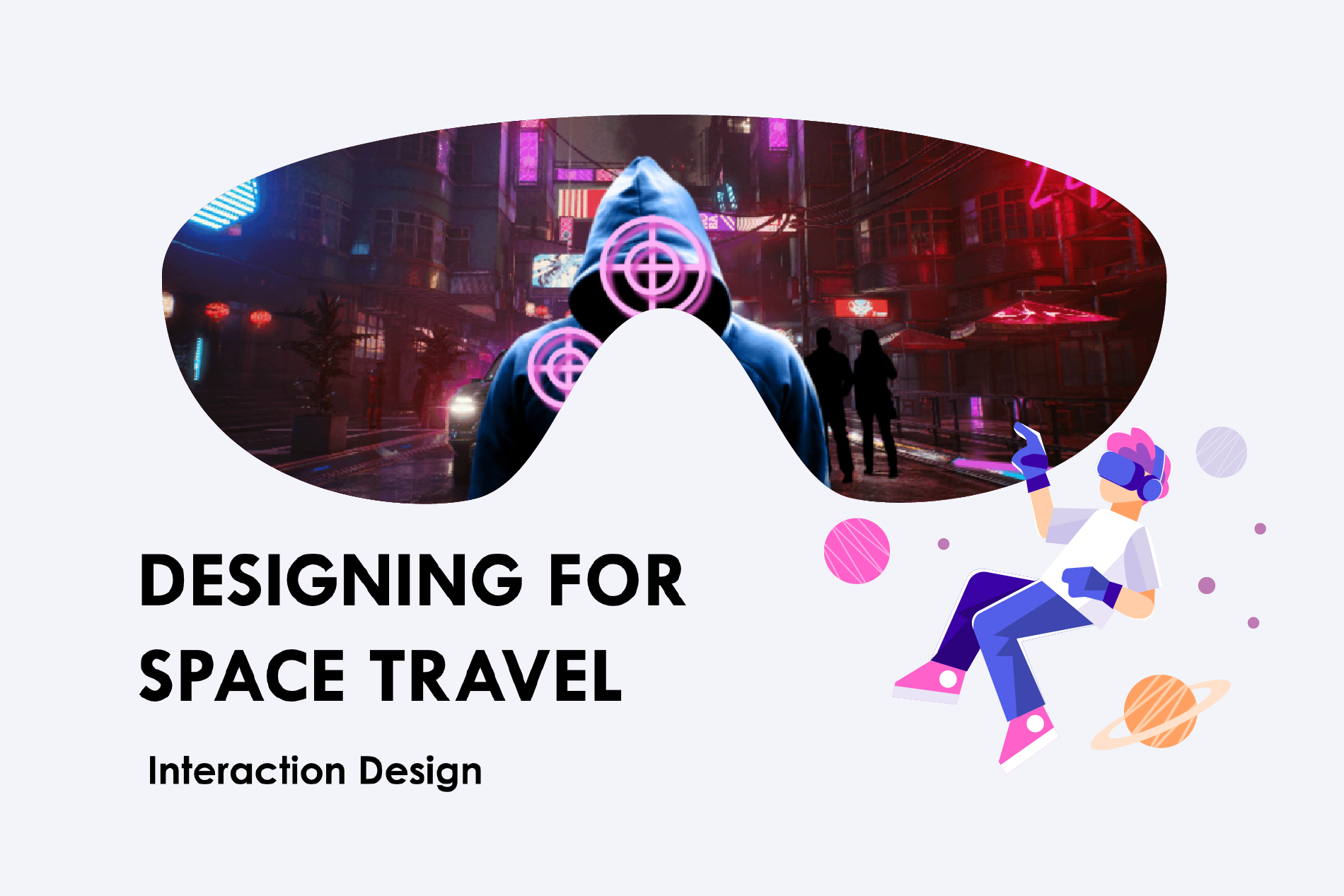
MY ROLE
Interaction Designer
MY RESPONSIBILITY
- Conduct background research, user testing, and analyse research insights
- Create sketches to communicate concepts, design moodboards, and high-fidelity prototype
- Create video prototype
- Present design concept to supervisor/ tutor
TOOLS
Figma, Adobe Premiere Pro
PROJECT OVERVIEW
Designing for space travel was my Interaction Design Studio class project. In this project we were asked to design an interactive product that will be used for space travel in the future. For this assignment, the problem area that we focused on was:
- Maintaining muscle and bone health during the mid-flight
- User needs was to have an engaging experience and motivation to exercise when exercising for more than 2 hours everyday is compulsory in space
Design Process Planning
For our design process, we re-created the double diamond diagram into a triple diamond to better represent the process we went through.
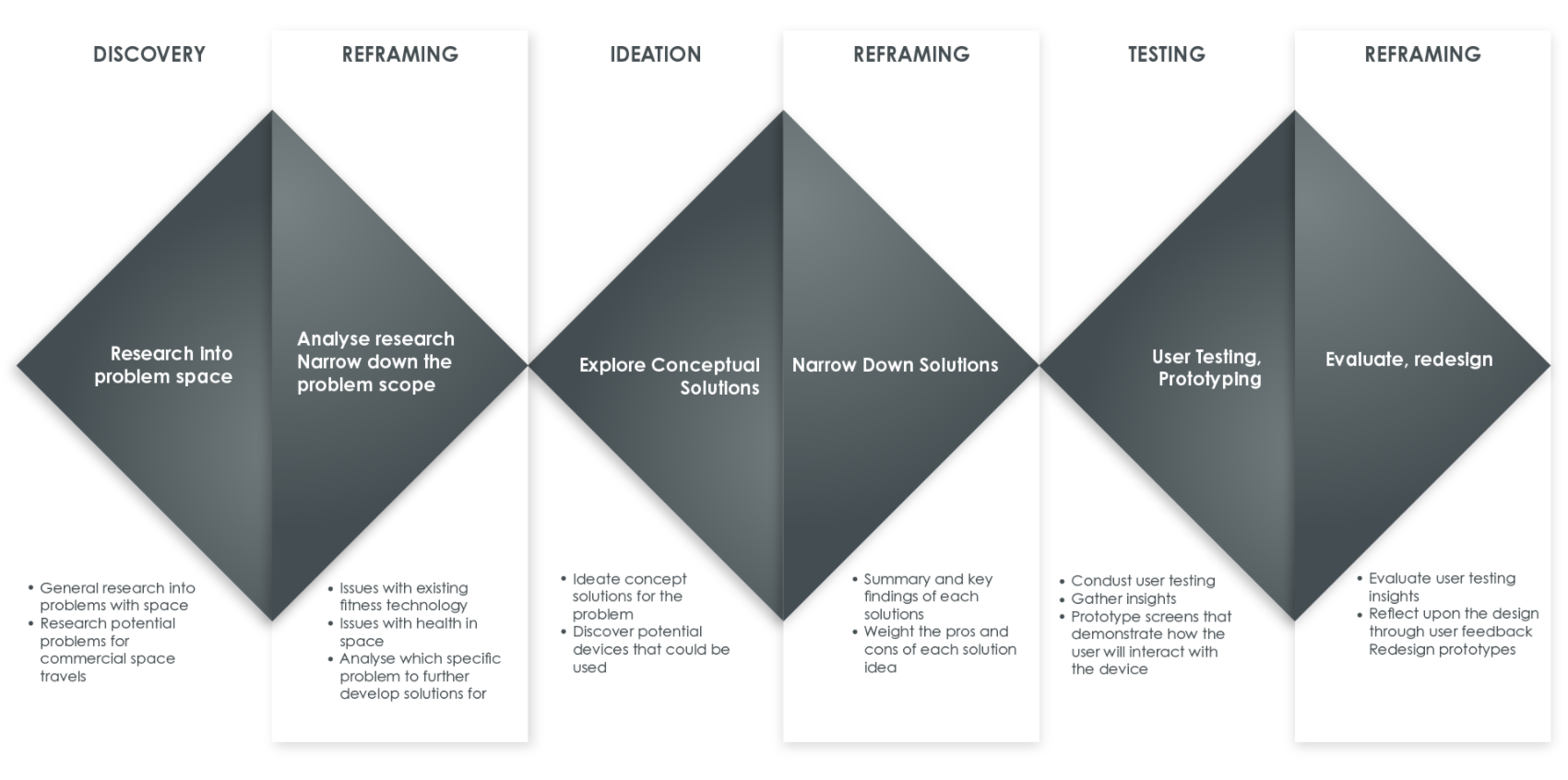
Triple diamond process include:
- Research into the broad problem space of commercial space travels. We narrowed down the problem muscle and bone health issues
- Ideate different ways to maintain muscle and bone health using different devices. Then, choosing our final concept idea to be further developed
- User Testing. We came up with significant number of feedback on ways to improve the prototype.
- Evaluation. We analysed and evaluated the feedback to choose which ones to be taken into consideration and be implemented into the iteration of the prototype.
Research
In a microgravity environment, astronauts have to exercise more than two hours every day. There are many health risks and one of the crucial risks is atrophy and osteoporosis due to living in a microgravity environment for long duration of time. Scientists and engineers are working to discover the best way to slow down this weakening of the muscle and bones in space.
The workout machines that are currently used in space are ARED, CEVIS, and COLBERT. All of these exercise machines use a harness to apply pressure. Some problems that astronauts have experienced with these workout machines are:
- Karen Nyberg mentioned how running on the space treadmill machine isn’t as good as running on earth.
- When using the machines, astronauts can’t move around freely since they are strapped down in a harness. This makes it difficult to reach out to the screen in order to navigate through the interface.
- Fitness apps don’t promote progressively improving workout results because once the user chooses a workout routine, they do the same one continuously even when they should start pushing themselves to do a harder exercise. Their progress will plateau instead of gradually increasing.
- Workout devices are problematic when they have a separate control unit, but this weakness could be turned into an opportunity by using this feature in appropriate situations.
- Turning routines into games could make the user quickly forget about their routine and turn their focus on the game itself. This could lead to the user getting easily bored of the game because they are working out for the sake of the game. Moreover, user will critique the effectiveness of the game rather than focusing on their workout performance. Most games are played where the user’s exercise performance can earn them tokens, which can be used to make in-app purchases.
Concept Development
In our ideation phase we started with three different concept sketches and storyboards. We designed how the interface might look like starting from when the user first interact with the device, navigation bar, and how the interface would look like when the user is exercising and finish exercising. The low fidelity prototypes of each concept were shown to users for user testing utilizing the Think-Aloud protocol.
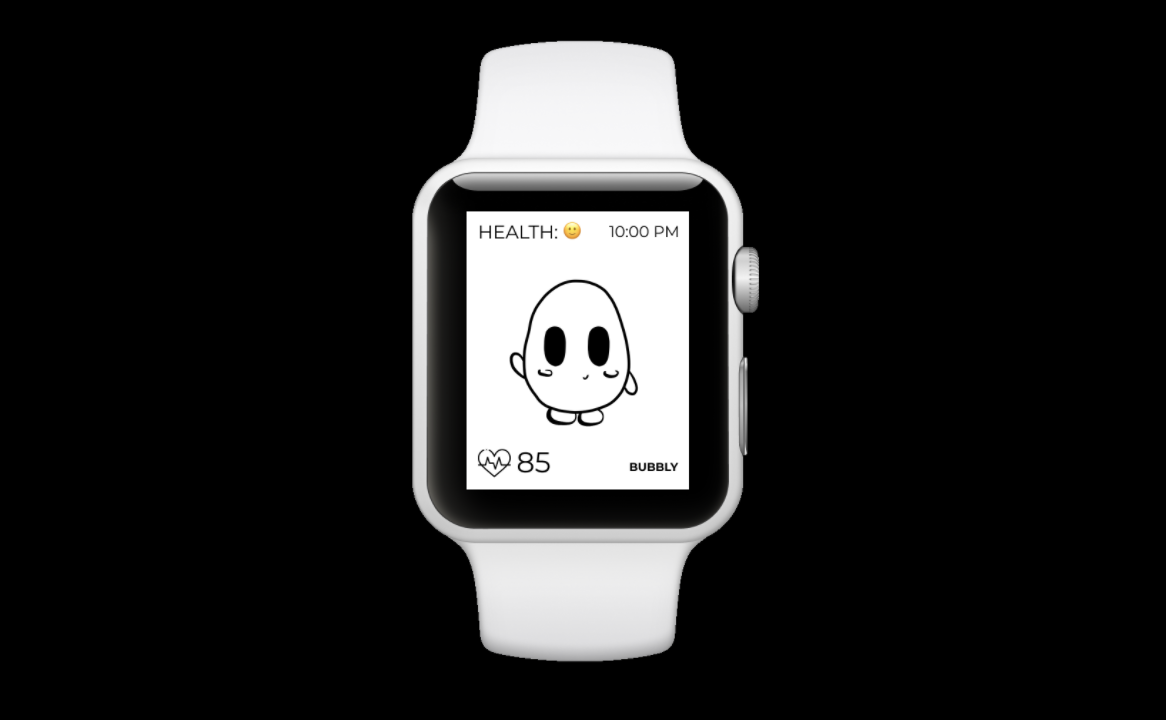
Virtual Pet Game on an Apple Watch
Inspired by the Japanese digital handheld pet game Tamagotchi.
In the game users will be raising a pet and its growth is relative to their muscle and bone health.
Aimed towards giving the user an incentive to workout so that their virtual pet won’t die.

Virtual Reality Exercise Device
A VR device that is used in combination with an exoskeleton machine.
Used when the user is exercising using cardio machines (either COLBERT or CEVIS).
Aimed to create an immersive and interactive workout for the users so that they are more motivated to exercise.
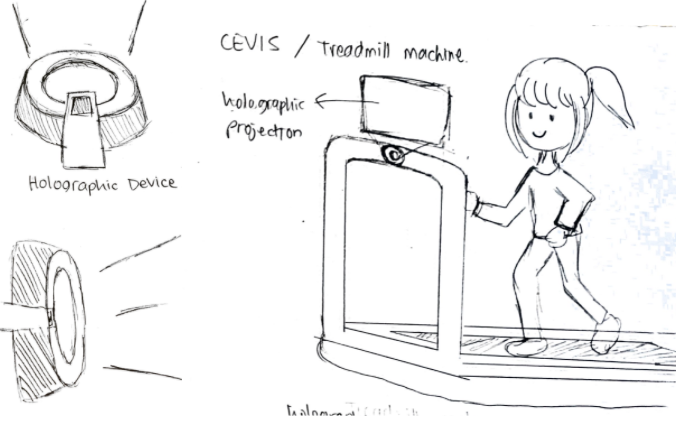
Smart GOAL Holographic Screen
Aimed towards helping users transition into working out in a unfamiliar microgravity environment.
The device projects a holographic screen, which is attached to the workout machine (i.e. for ARED, it is attached to the upper part of the machine)
Decision Matrix
To come up with a final decision out of the three concepts, we systematically evaluated our concepts using decision matrices. This allowed us to visually see each of the concept’s weaknesses and strengths. By doing this, we were better able to tell if the weaknesses were minor issues or if it was not resolving the main design problem. Noticing the concept’s area of strength helped us to see how it can be further developed for better use and solutions that would best fit the design brief. The chosen concept is Virtual Reality Exercise Device as the concept has the most potential and positive feedback from the user. User feel that the Virtual Reality device motivates them to do their workout.
User Journey Map
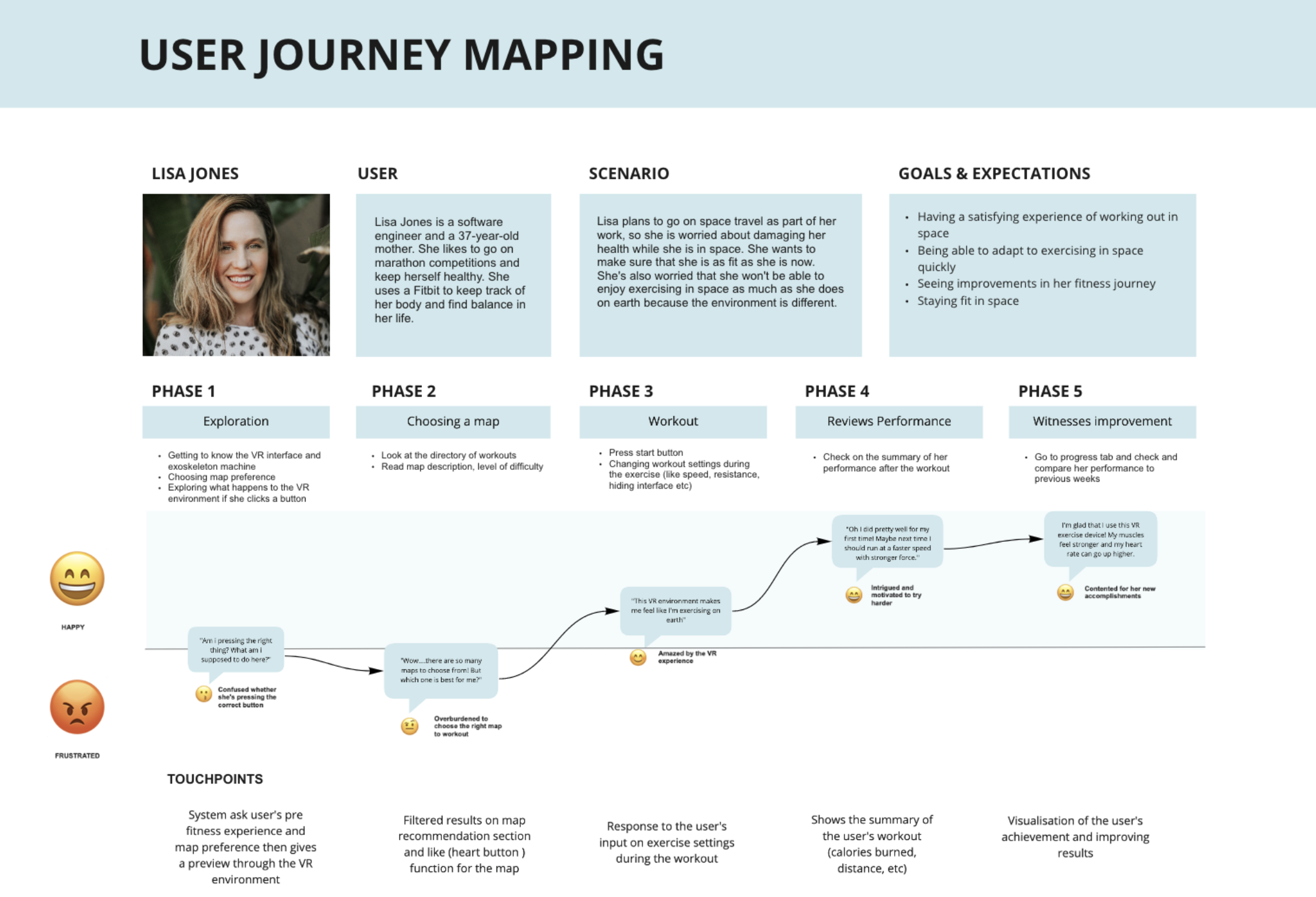
Final Concept Iterations
Once we chose our final concept, we redesigned specifically its concept, theme & style, and the interface to make it more unique. For the concept, we chose the idea of a spy on a secret mission who needs to do stunts and fight bad guys, which will become a more gamified workout experience for the users. For the theme & style, we chose a cyberpunk theme with neon colours to catch more of the user’s attention and bring excitement to the experience. For the interface, we have focused on making the experience rewarding, engaging, and comprehensive.
Following the redesign, we did a user testing with our high-fidelity prototype using evaluation methods such as Think-Aloud protocol, Heuristic Evaluation, Interviews, and SUS score.
- Think-Aloud protocol was used to understand how the user would think and navigate when using VR. It helped us to see how users think when they first see our interface design and what thoughts lead to their decisions to their actions.
- Interviews were conducted after the think-aloud protocol to discover user’s perspectives and thoughts on our concept design, specifically how using VR would be helpful as a way to motivate users to exercise and in the context of space.
- Heuristic evaluation was used to identify usability problems, especially in user interaction—how well it guides the user throughout the workout and how engaging the interface is.
- Finally, SUS score was used to gain a global view of the subjective quality of the concept design (Tomitsch, 2019).
Final Concept Video
Here is our final video prototype. Enjoy!
Credits
This project is accredited to my teammates, Cyrilla Lowas and Valencia Yun. Our full project documentations and references can be viewed here:
- Initial Concept Development – download here.
- Final Project Report – download here.
- Final Presentation slides – download here.
Let's Work Together!
Don't hesitate to contact me if you have any inquires! I'm best reached through Linked In or email.